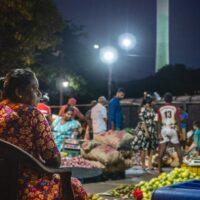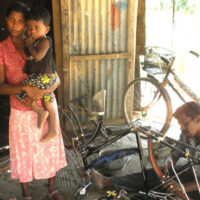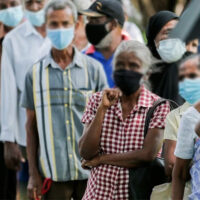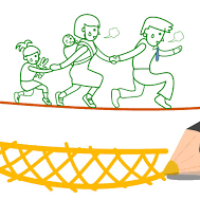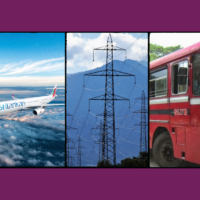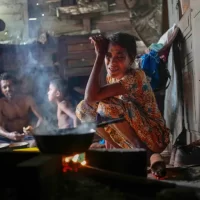Navigating the Nexus: Social Cohesion and Poverty in Sri Lanka- Part 01
A Deep Dive into CEPA’s Intergenerational Dialogue 6
The Centre for Poverty Analysis (CEPA), had the pleasure of welcoming Gayani Hurulle from LIRNEasia, alongside our own Professor Hemasiri Kotagama and Professor Sisira Pinnawala to our 6th edition of the Intergenerational Dialogue Series: Cost of Poverty; The nexus between social cohesion and poverty. Poverty is a complex phenomenon of interrelated causes and effects and as such requires investigations from a spectrum of disciplines. For this reason, The Social Cohesion and Reconciliation Thematic at CEPA has committed itself to researching the symbiotic relationship between poverty and social cohesion.
Those in attendance were witness to the academic difficulties there are in calculating where the nexus begins or ends between social cohesion and poverty, it is certainly a problem deserved of more than a 2-hour dialogue. Nevertheless, the panelists gave fantastic insights and throughout this article we can begin to tease out their thoughts.
It is apparent that there has been an absence of social cohesion both historically and contemporarily within Sri Lanka, the 30 year civil war both a result of and exacerbating this. Across the differing typology of social groupings: ethnic, religious and economic groups, have largely remained divided from one another. Clearly it is possible to observe the absence of social cohesion, it is the task of creating a succinct, testable definition that is taxing.
In his opening address, Dr. Pinnawala posed the question, whether the nexus between poverty and social cohesion can be understood by linking social cohesion with conflict, or more correctly, the absence of conflict. For this he cited the example of J.S. Furnivall’s ‘Netherlands India’. Here society functioned without overt conflict, but according to Furnivall in the absence of social cohesion. It was a realm where mere market transactions proved inadequate in fostering a sense of unity. It lacked the profound emotional attachments that binds individuals within a community, which prevents networks being treated as tradeable commodities. Therefore a nuanced understanding must go beyond equating social cohesion simply to conflict, or lack thereof, or economics. Dr. Pinnawala’s solution: defining social cohesion through a conceptual framework based on social capital.
Social capital in its most basic sense represents the trust, reciprocity, shared norms, and collective efficacy that exists within a community or society. Social capital is essential in creating stability, in ensuring that interdependent, diversified communities can function successfully, reliant on one-another for support. More importantly it attempts to provide us with a quantifiable method in which to analyse how cohesive a society is.
Poverty, comparatively, has a concrete, testable methodological basis. Ms Hurulle’s data taken from LIRNEAsia’s ‘Social Safety Nets and the State of Poverty in Sri Lanka’, calculated 7 million people (2 million households) fell below the poverty line in Sri Lanka in 2023, 31% of the population. This figure was quantified as a person whose real per capita expenditure per month is less than the value of the official poverty line (LKR13,777 in 2023). The report from LIRNEasia is rather damning; 4 million individuals have fallen into poverty since 2019, all 9 provinces experiencing a increase. Of course, poverty is not experienced equally, 51% of the Estate communities are living on less than LKR 13,777 monthly and if figures were investigated inter-sectionally then more concerning data would be revealed, notably 44% of Up-country Tamils live in poverty.
Poverty is the preeminent issue in contemporary Sri Lanka, highlighted through the figures collected by LIRNEasia, however, this has come at the arguably the highest point of unity in post-war Sri Lanka, when the Aragalaya saw Tamils, Muslims and Sinhalese standing in solidarity at the Galle Face. Therefore, what can we begin to unravel and derive in our understanding of the nexus? Does social cohesion manifest as a side-effect of poverty? Is it a force to alleviate people out of economic woes?
The idea of collectivism, introduced into the discussion by Professor Kotagama, is imperative within this discussion. How can trust and cooperation, the foundational blocks to social capital, be realised amongst interdependent peoples without the ability of those involved to recognise the importance of the collective. Here we are talking about the principle of prioritising a groups wellbeing, as opposed to a socialist understanding of the term.
A pertinent example of collectivism was the response to the Boxing Day Tsunami. The scale and shock of the event worried onlookers who predicted the death toll skyrocketing in the chaos of the aftermath. Instead, strong institutions alongside private and community efforts worked successfully and efficiently across ethnic divisions. Temporary shelter was provided, food and medical supplies were given out immediately, whilst long-term education regarding sanitation and hygiene prevented the spread of disease. The uneven impact could have posed problems for a divided country, not only were the key industrial, agricultural and metropolitan centre’s relatively unaffected, it was the majority Tamil provinces of the North and East that accounted for 2/3 of the total deaths. The ‘singularly successful’ (Jayasuriya, 2006) emergency response, in provinces still engulfed in the civil war, demonstrated that it was possible to have institutional and private collective action for the benefit of the masses. Local NGO’s and communities utilised and created networks in order to provide economic, alongside educational and psychological relief, surpassing the governments ability to support the affected peoples. The trauma of the event kickstarted a collective response so successful, it brought confidence back to the depreciating Rupee on the foreign exchange market.
The social cohesion after the Tsunami demonstrates how intrinsically involved it is with the alleviation of communities from struggles. Now thanks to the data and analysis from LIRNEasia, it is unequivocal how pertinent an issue poverty is within contemporary Sri Lanka. With an ever increasing number of households struggling to afford their basic requirements, it is only sensical that institutions and the private sector coordinate and unite again to facilitate the rebuilding and discovering of social capital in Sri Lanka. Be that as it may, nationwide social cohesion in post-war Sri Lanka has appeared only in short-bursts, during the aftermath of the Tsunami and Aragalaya. The question remains as to why the ‘connectiveness’ disappears so quickly once the events conclude and thus, how it can be manifested and sustained for long-term struggles, such as poverty. We must question the governments role in social cohesion, as both events have succeeded in opposition to government, so that successful practices can be copied to create and utilise social capital amongst communities, away from the elite interference.
by Louis Samarasinghe
(Mail: loumaxsam@gmail.com )
